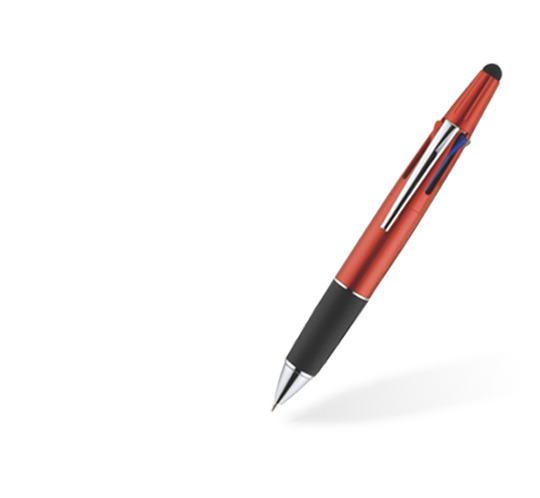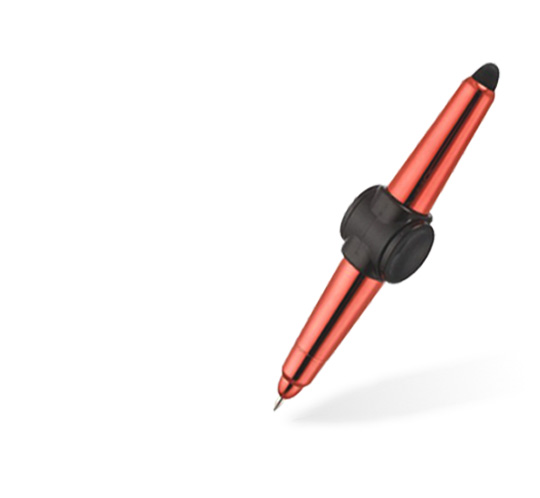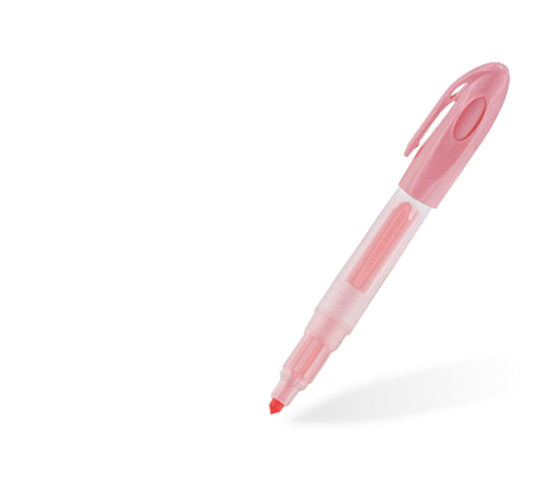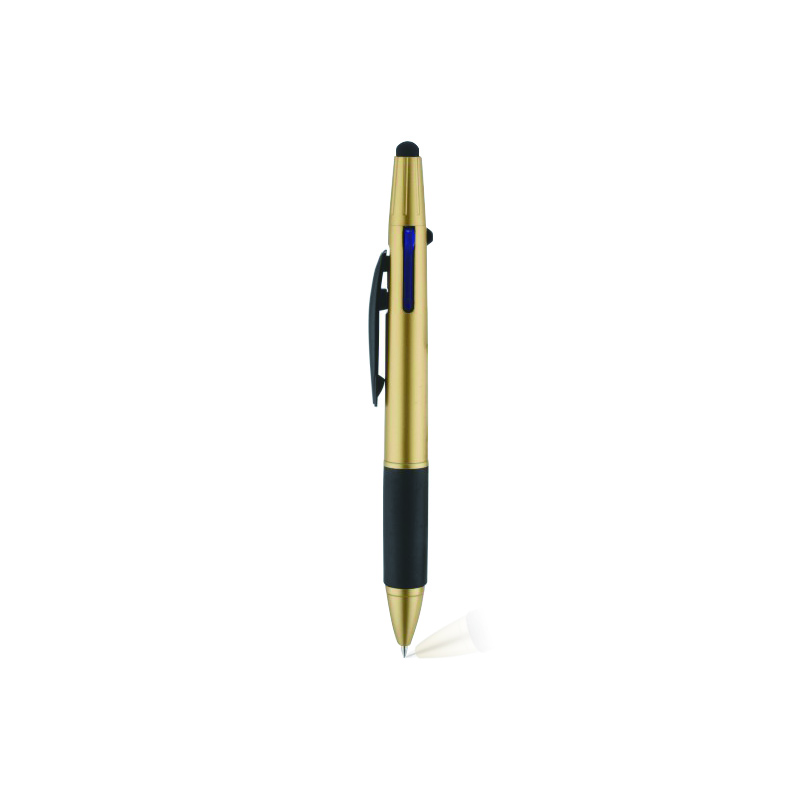Do you know the history of the development of ballpoint pens?
Ballpoint Pen (Ballpoint Pen) is a pen that brings out the writing medium by rolling the ball on the tip of the pen or refill. A ballpoint pen is a pen that uses a tiny rotating ball. This ball is made of brass, steel or tungsten carbide, which releases ink onto the paper when writing. The ballpoint pen is very different from its predecessors-reed pens, quill pens, metal nib pens and fountain pens.
Development History:
The first time that the name ballpoint pen appeared was in 1888. It was an American journalist named John Lauder who designed a pen that used a roller ball as a nib, but he failed to make it into a commodity that is easy for people to use.
In 1895, a commercial non-writing ballpoint pen was also sold on the British market, but it was not popular because of its narrow use.In 1916, someone in Germany designed and produced a new type of ballpoint pen. Its structure is similar to that of today's ballpoint pen, but its performance is poor and it has not attracted widespread attention.
The Hungarian journalist Ladiszlo Biro is very aware of the problems with ordinary pens. Biro believes that when he visited a newspaper, he came up with the idea of replacing the traditional ink pen with a pen that uses quick-drying ink. The ink used in newspapers dries almost instantly without leaving stains. Biro vowed to apply similar ink to a new type of writing instrument. In order to prevent sticky ink from clogging his pen, he proposed to install a small rotating metal ball on the top of the tube containing this quick-drying ink.
The metal ball will have two functions: as a pen cap to prevent the ink from drying out. Make ink flow out of the pen at a controlled rate. In June 1943, Biro and his brother Georg (a chemist) applied for a new patent from the European Patent Office and produced the first commercial ballpoint pen, the Biro ballpoint pen. Later, the British government purchased the right to use this patented ballpoint pen so that these ballpoint pens can be used by the crew of the Royal Air Force. In addition to being stronger than traditional fountain pens, ballpoint pens can also be used at low pressure and high altitude (in high altitudes, the ink of traditional fountain pens will overflow). This has received very good results in the Royal Air Force, making the Biro ballpoint pen highly praised. In World War II, this ballpoint pen was widely used in the army due to its sturdiness and ability to adapt to the battlefield environment.
In the United States, Milton Reynolds introduced a new type of ballpoint pen in 1945 and successfully put it into commercial production for the first time to replace the fountain pen that was still popular at the time. The ballpoint pen uses a small ball to release a very concentrated gelatin ink onto the paper. Renault ballpoint pen is a simple writing tool, and it has been widely promoted as "the first pen that can write underwater". Renault sold 10,000 when it first introduced the new ballpoint pen. These first public sale ballpoint pens are very expensive ($10 each), mainly because they use new technology. In 1945, the first cheap ballpoint pen was produced. At that time, Frenchman Marcel Bich developed an industrial process for manufacturing ballpoint pens, which greatly reduced the unit cost. In 1949, Bisch launched his ballpoint pen in Europe. He named these ballpoint pens "BIC", which is a simplified version of his name that is easy to remember. Ten years later, BIC Corporation sold its ballpoint pens to the US market for the first time. Consumers were reluctant to buy BIC ballpoint pens at first, because other manufacturers have launched many ballpoint pens in the US market. In order to dispel the hesitation of consumers, BIC launched an exciting nationwide TV campaign to promote this kind of ballpoint pen to consumers "use it once, want to use it again and again!" and sell it at a price of only 29 cents. Ballpoint pen. BIC also released TV commercials depicting their pen shot from a rifle, strapped to skates and even mounted on a jackhammer. Within a year, competition forced the price of each pen to drop below 10 cents. BIC produces millions of ballpoint pens every day! A ballpoint pen is a writing tool that uses the rotation of a steel ball to write ink on paper. After the Second World War, ballpoint pens were introduced to China. Shrewd businessmen advertised "ball pens" and used the surplus of the atomic bomb that exploded in Japan to open up sales. In fact, "ballpoint pen" has nothing to do with atoms, it just sounds similar. Ballpoint pens quickly became popular in the world. Japan alone consumes 400 million ballpoint pens a year. The reason why the ballpoint pen can write is because the steel ball in the pen tip can bring out the quick-drying ink and transfer it to the paper when it rolls. It is said that the dry ink in Japanese ballpoint pen refills is enough to write 20,000 characters. However, as the number of written characters increases, the gap between the steel ball and the steel tube will gradually become larger, so that the ink will leak out from the gap and often stain clothing, etc., which is very unpleasant. A small business owner in Japan came up with a trick: to pack less dry ink so that the ink in the refill can only write more than 10,000 characters before it is used up, so that the problem of oil leakage in the ballpoint pen refill is solved. Therefore, he applied for a patent to produce a short ballpoint pen core and ballpoint pen, which was welcomed by the majority of customers. This method of solving problems seems to be cutting corners, but in essence it is an innovation, an ideological and methodological innovation to solve problems that people could not solve at the time.
Ballpoint pens were more expensive than fountain pens in the 1950s, and they were reluctant to throw them away after they were used up. They can be refilled and used in special pen shops. It is said that Bilo, a Hungarian, is a proofreader in a printing factory. Because the printed proofs contain a lot of moisture, they can be changed with a pen, and the characters are easily leaked and blurred. So he used a steel ball to cover a thin ink tube to write. , It is not easy to produce the previous problems. Later, Billow provided his invention to the Royal Air Force, and a British aircraft manufacturer produced the first batch of ballpoint pens. Until World War II, the Americans adopted Bilo's invention. In 1916, the new ballpoint pen designed by German Lisboa was not promoted. Until the outbreak of World War II, the U.S. Military Industry Department proposed to create a pen that was suitable for writing at high altitude, did not leak water, was not affected by cold and heat, could store a large amount of ink, and did not need to fill it frequently, and gave it a great reward. In 1944, Chicago businessman Reynolds saw this as an excellent opportunity to make a fortune. Because of his active mind, he heavily invited people to improve Lisbok's pen, and he succeeded in a year or so. At that time, the United States lost the atomic bomb in Japan. He made a big advertisement and named his pen and the atomic bomb together, named the ball pen, which quickly became popular all over the world.
In 1948, China's first domestic ballpoint pen was born in Shanghai Fenghua Ballpoint Pen Factory. After the reform and opening up, driven by huge export demand, pen manufacturers have sprung up like bamboo shoots after a rain. Relevant national authorities in China launched the "R&D and industrialization of key materials and preparation technologies for the pen industry" project in 2011. The state allocated nearly 60 million yuan to support relevant scientific research institutions and enterprises for neutral ink manufacturing, pen tip stainless steel wire, processing equipment, etc. Carry out scientific and technological research. After unremitting efforts, the project passed the "Twelfth Five-Year" National Science and Technology Support Plan acceptance in 2015, achieving a series of technological breakthroughs. For a long time, the dilemma of "import dependence" that has plagued China's pen industry has begun to be gradually reversed. In order to install "Chinese pens" for tens of billions of ballpoint pens, the state started the research on this key project as early as 2011. According to Wang Huimian, a senior engineer at the Technical Center of Taiyuan Iron and Steel Group, that in order to make pen nibs with steel, a lot of special trace elements must be used to adjust the steel to the best performance. The slight changes in the ratio of trace elements will affect the quality of the steel. This ratio cannot be found. , China’s pen-making industry will always need to import nib steel. In order to refine the materials, Wang Huimian, a senior engineer at the Technical Center of Taiyuan Iron and Steel Group, said that because there is no reference material for the development of this product, it is refining from tens of kilograms for the ratio of one ingredient, and the number of additions of various ingredients cannot be counted NS.
The production process of pen-based products is the core secret of foreign companies, and Wang Huimian must independently develop an unprecedented steelmaking process. Without any reference, we can only continuously accumulate data, adjust parameters, and design process methods.
The inspiration for the breakthrough came from the home-made "mixing noodles". If you want noodles to live moderately soft and hard, new "materials" must be added, and industrial "additives" must be added to the corresponding molten steel. Ordinary additives are lumps. If the lumps can be made thinner and thinner, the molten steel and the additives will blend more uniformly, which can enhance the machinability. After five years of countless failures, under the electron microscope, TISCO finally saw the nib steel with evenly distributed "additives". The test was successful in September 2016. After more than ten times of large-scale steelmaking, the first batch of steel with good machinability was finally released. This batch of stainless steel wires with a diameter of 2.3 mm can be proudly written with the "Made in China" logo.







 英语
英语 中文简体
中文简体


